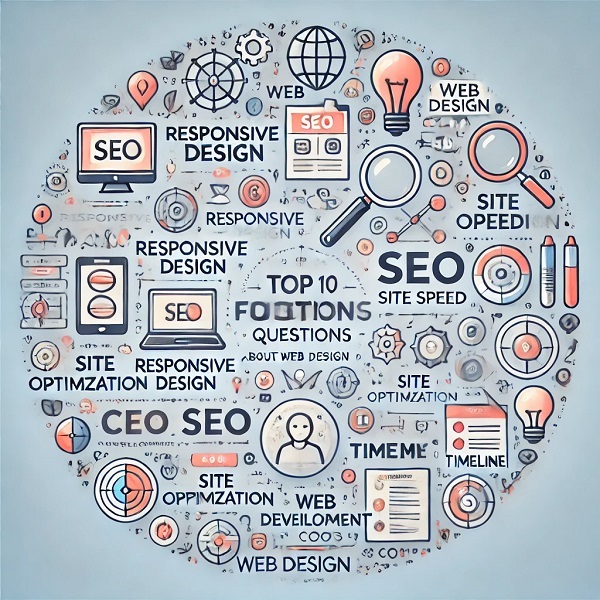1. What is Web Design?
Web design encompasses the process of creating the visual aspects of a website. This includes layout, color schemes, graphics, and overall aesthetics. Web design is crucial as it impacts how users perceive and interact with your site. Good design can enhance user experience, increase engagement, and drive conversions.
2. Why is Responsive Design Important?
Responsive design ensures that your website looks and functions well on all devices, including desktops, tablets, and smartphones. With the increasing use of mobile devices, a responsive design is critical for providing a seamless user experience. It also improves your site’s SEO, as search engines prioritize mobile-friendly websites.
3. How Does Web Design Affect SEO?
Web design significantly impacts SEO in several ways:
- Site Speed: Faster loading times improve search rankings.
- Mobile Friendliness: Responsive design boosts mobile search results.
- User Experience: Easy navigation and attractive design can reduce bounce rates.
- Content Structure: Proper use of headers, images, and meta tags improves SEO.
4. What are the Key Elements of Effective Web Design?
Effective web design includes:
- Clear Navigation: Users should easily find what they need.
- Consistent Layout: Uniform design elements throughout the site.
- Engaging Content: High-quality, relevant content that appeals to your audience.
- Fast Loading Speed: Reduces user frustration and bounce rates.
- Visual Appeal: Attractive design elements and graphics.
5. How Much Does a Website Design Cost?
The cost of web design varies widely based on complexity and requirements. Simple websites can cost a few hundred dollars, while complex e-commerce sites or custom designs can run into thousands. Factors affecting cost include:
- Design Complexity: More intricate designs take more time and resources.
- Functionality: Additional features like e-commerce capabilities or custom integrations.
- Customization: Templates are cheaper than fully custom designs.
6. How Long Does It Take to Design a Website?
The timeline for designing a website depends on its complexity:
- Simple Sites: A basic site can take a few weeks.
- Medium Complexity: Sites with more features can take 1-2 months.
- Complex Sites: Large, custom sites can take several months. The process includes planning, design, development, testing, and revisions.
7. What is the Difference Between Web Design and Web Development?
Web design focuses on the visual and user experience aspects of a website, such as layout, color schemes, and graphics. Web development, on the other hand, involves the technical side, including coding and programming to make the design functional. Both disciplines work together to create a fully operational website.
8. What is UX and Why is it Important?
User Experience (UX) refers to how users interact with and experience a website. Good UX design is critical because it ensures that the site is user-friendly, accessible, and enjoyable to use. Key aspects of UX include:
- Ease of Navigation: Users should easily find their way around the site.
- Accessibility: The site should be usable by everyone, including those with disabilities.
- Engagement: The design should keep users interested and encourage interaction.
9. How Can I Make My Website More User-Friendly?
To make your website more user-friendly:
- Simplify Navigation: Use clear, intuitive menus and links.
- Improve Loading Times: Optimize images and use efficient coding.
- Mobile Optimization: Ensure your site works well on all devices.
- Clear Calls to Action (CTAs): Guide users on what to do next with prominent CTAs.
- Accessible Design: Use readable fonts, contrast colors, and alt text for images.
10. What Tools are Commonly Used in Web Design?
Common web design tools include:
- Graphic Design Software: Adobe Photoshop, Illustrator, or Sketch for creating visuals.
- Web Design Platforms: WordPress, Wix, or Squarespace for building websites.
- Code Editors: Sublime Text, Visual Studio Code, or Atom for coding.
- Prototyping Tools: Figma, Adobe XD, or InVision for creating design prototypes. These tools help designers create, prototype, and build effective websites efficiently.
Understanding these frequently asked questions about web design can help you grasp the basics and appreciate the complexities involved in creating a functional and aesthetically pleasing website. Whether you are a beginner or looking to enhance your current website, these answers provide valuable insights into the world of web design.
